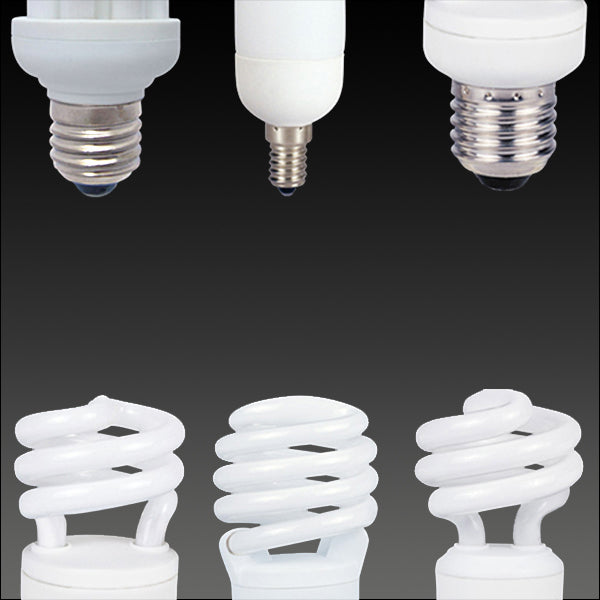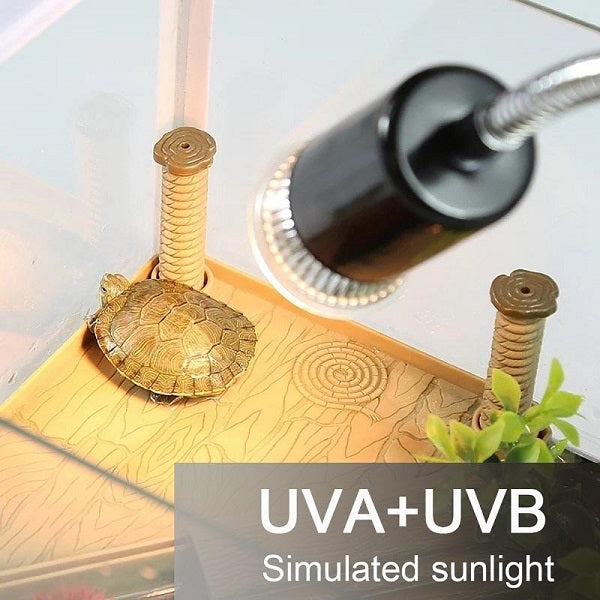How to Choose the Right Reptile Heat Lamps

As the weather gradually turns colder, the temperature difference between day and night is getting bigger and bigger. Many people who raise turtles at home are considering the issue of heating. Among them, the most talked about is the products of the series of reptile heat lamps. Today, let's talk about this kind of lamps.
Speaking of heat lights, let's talk about the three ultraviolet bands of UVA, UVB, and UVC firstly.
The UVA band is also known as long-wave black spot effect ultraviolet rays, which have strong penetrating power and can generate high amounts of heat. The heating lamps used when raising turtles are mainly UVA spotlights that contain a small amount of ultraviolet rays in the UVA band.
The UVB band is also known as medium-wave erythema effect ultraviolet rays, which have average penetration and will be largely isolated by glass, plastic, etc. UVB rays are of great significance to tortoises. Most tortoises need UVB bands to synthesize vitamin D3 to promote the absorption of calcium.
The UVC band is also known as short-wave sterilization ultraviolet rays. It has very weak penetrating power and has a bactericidal effect, but it is very harmful to humans and turtles. Long-term or high-intensity irradiation can also cause skin cancer.
After understanding the role of various bands of ultraviolet light, let's take a look at the existing tanning lamps on the market.
UVA lamp. In essence, it is a reflective condensing incandescent lamp, which is mainly used to heat the turtle. It is inexpensive and has a short lifespan. Be careful to avoid splashing water during use. Splashing water may easily cause the bulb to burst.
UVB lamp. There are two types of fluorescent lamps and LED lamps on the market, whose main function is to produce UVB rays. The price is relatively high, the price difference between different brands is large, and the quality is uneven. When we use UVB lamps, in addition to paying attention to the intensity of UVB rays, we must also pay attention to safety. Inferior UVB lamps, in addition to UVB rays, also contain UVC rays, and UVC rays are harmful to humans and tortoises.
Full-spectrum solar lights. It is a kind of turtle raising artifact that has emerged in recent years. There are mainly two kinds of mercury lamps and metal halide lamps. The difference is that the required voltage is different. The mercury lamp is a low-pressure gas discharge lamp of 220V, while the metal halide lamp is a high-pressure gas discharge lamp. It needs to be used with a ballast. The price is expensive, the price difference between different brands is also very large, and the quality gap is even greater. The quality of a full-spectrum solar lamp should mainly be measured in terms of spectral distribution, decay cycle, and life span.
Ceramic lamp. The full name is far-infrared ceramic heating lamp. It does not emit light and can generate high-intensity radiant heat source. It is mainly used for heating tortoises. It can be used with temperature control equipment to adjust the ambient temperature. It is inexpensive and has a long life. Ceramic lamps will generate a high amount of heat, so you should take protective measures when using them to avoid scalding people and turtles.
There is also a so-called "UVB3.0/full-spectrum/UVA+UVB solar lamp" that is sold on major platforms. It is essentially just an ordinary small filament bulb, which can hardly produce UVB, can only be used for heating, and cannot replace UVB, etc. And the role of full-spectrum solar lamps is just a means of propaganda for businesses.
In summary, different heat lights have their own functions, we need to use them together according to the actual situation.

